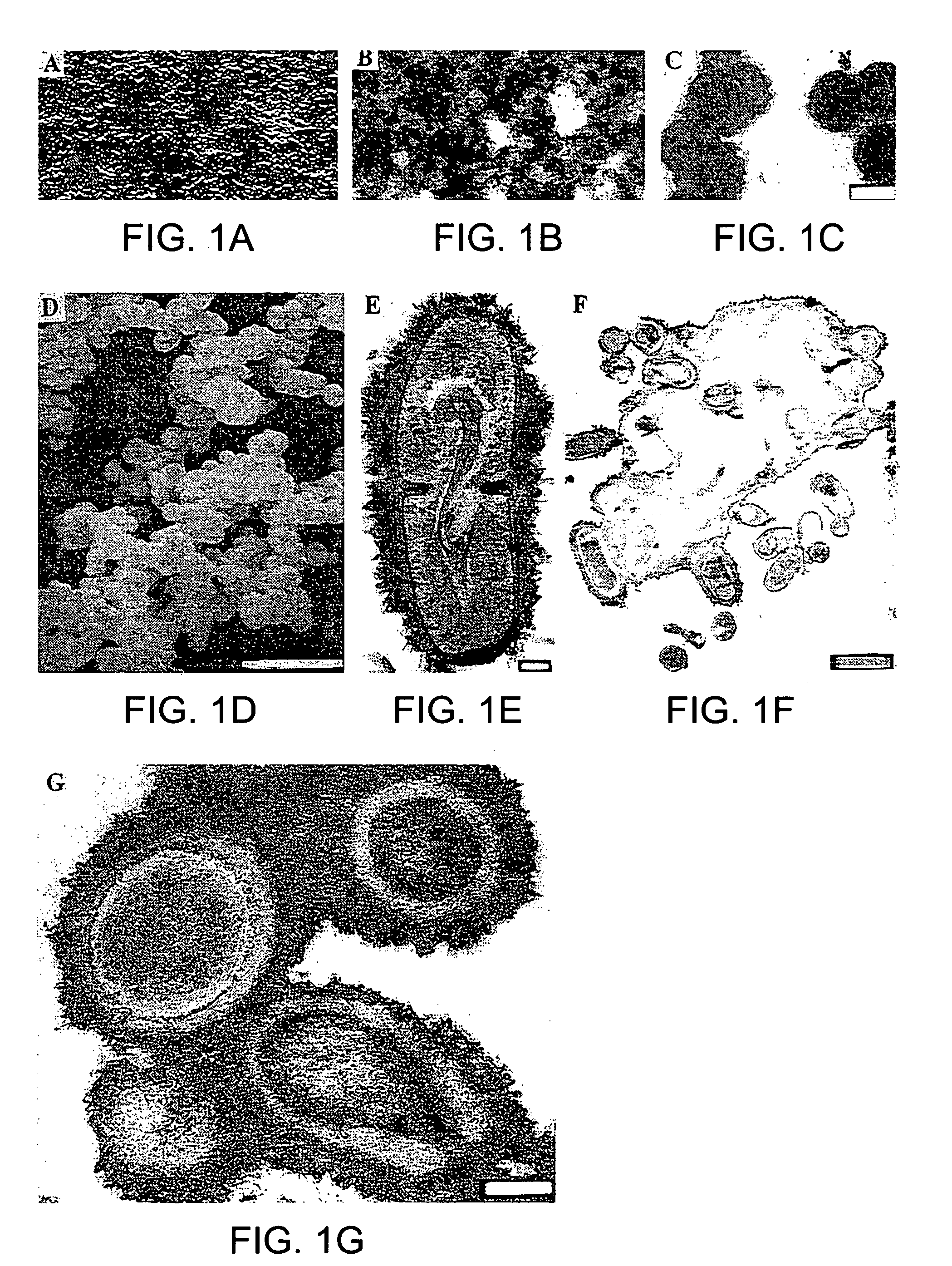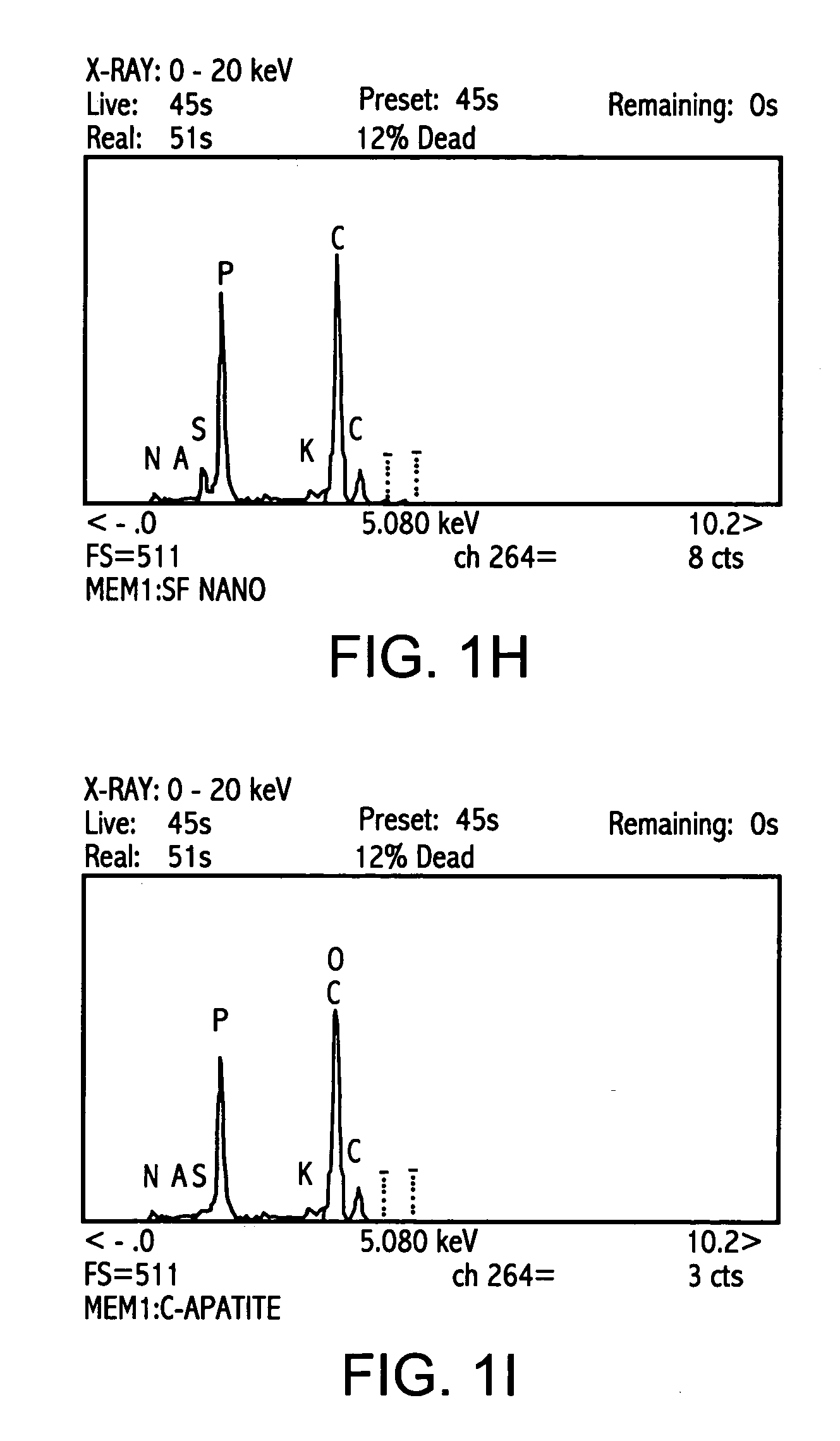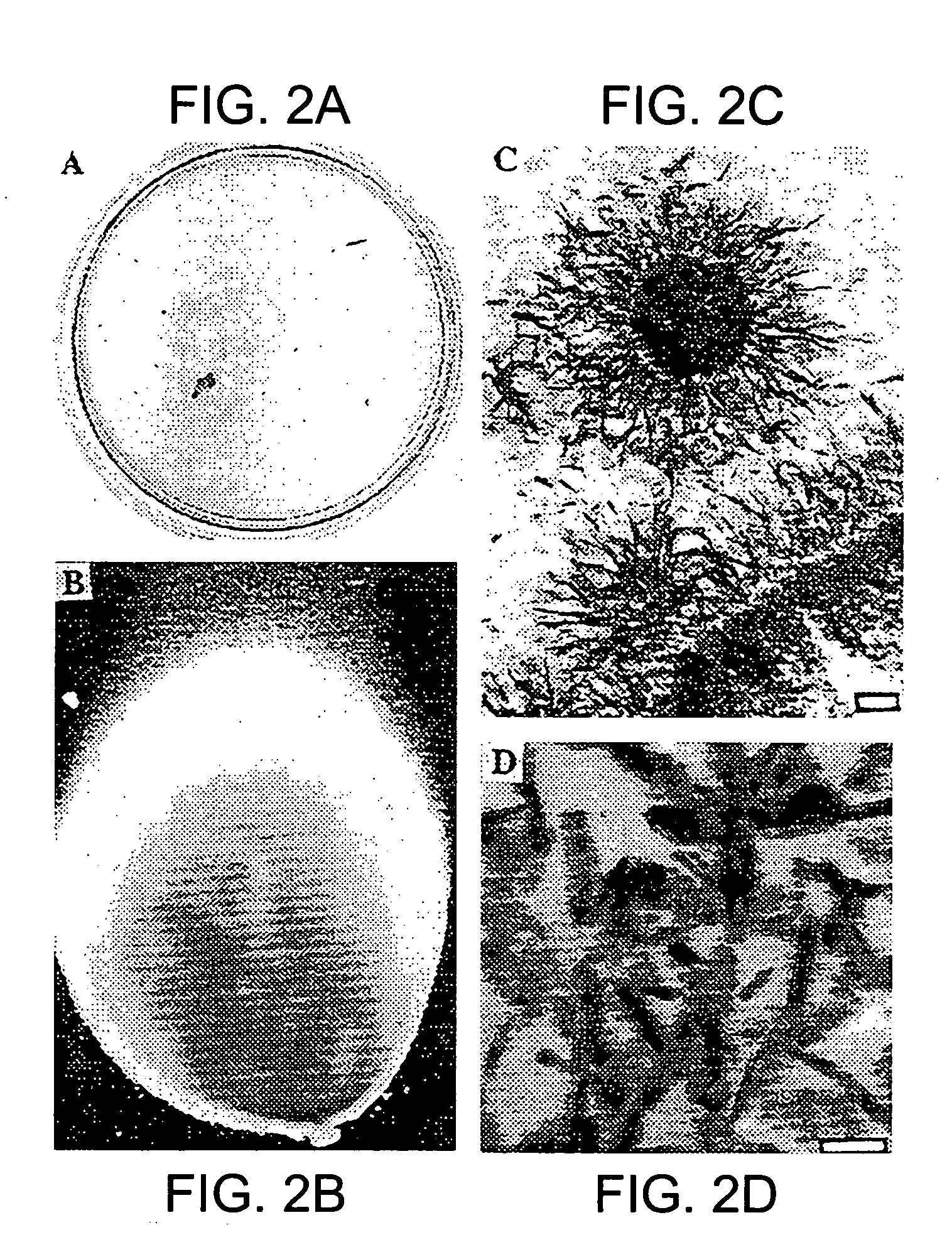Methods for eradication of nanobacteria
a nanobacteria and nanotechnology, applied in the field of nanobacteria eradication, can solve the problems of nanobacteria with complicated nucleic acid repair systems, difficult detection with conventional microbiological methods, and very unlikely presence of nanobacteria in complex systems, so as to prevent the recurrence of kidney stones, inhibit or prevent the growth and development of nanobacteria, and prevent the infection of nanobacteria
- Summary
- Abstract
- Description
- Claims
- Application Information
AI Technical Summary
Benefits of technology
Problems solved by technology
Method used
Image
Examples
example 1
Mineralization by Nanobacteria
In this study, the present inventors provide evidence that nanobacteria can act as crystallization centers (nidi) for the formation of biogenic apatite structures. The mineralization process was studied in vitro with one bovine isolate from commercial fetal bovine serum and with a human isolate. These findings are of concern in medicine because nanobacterial bacteraemia occurs in humans, and nanobacterial nidi might initiate pathological calcification.
Materials and Methods
Culture Methods for Nanobacteria.
Nanobacteria were cultured in DMEM (GIBCO) under mammalian cell culture conditions (37° C.; 5-10% CO2 / 90-95% air). Serum was used at 10% final concentration as the supplement and source of nanobacteria, which were fetal bovine serum (Sera Lab, lot 901045), or human serum from a 29-years-old Finnish male. The cultures were prepared using strict aseptic techniques in a cell culture facility. Nanobacterial samples were filtered through 0.2 μm filt...
example 2
Eradication of Nanobacteria
The selection of an appropriate test for nanobacterial disinfection is not straightforward, and accurate comparisons of the results obtained from different tests are problematic, due to the number of factors affecting disinfection. These factors include duration of exposure, presence of organic load, type, age, concentration and diluent of the disinfectant, and number, age, growth form of the microorganisms present, and the temperature. Currently there are several types of disinfection tests, but these are mainly suitable for rapidly growing bacteria. The disinfection tests of slowly growing Mycobacteria, some of which are extremely resistant, have long suffered from lack of appropriate, reliable standardization. Typically, centrifugation or very high dilution have been used to eliminate the effect of residual concentrations of disinfectants. Subsequently, plating on agar medium for colony count is done for evaluating the reduction in viability. For nan...
example 3
Dental Pulp Stones Made by Nanobacteria
The purpose of the experiments conducted in this example was to investigate if nanobacteria participate in the dental pulp stone formation. The design of the study was to culture nanobacteria on a healthy tooth, without dental pulp stone, and compare the results with those obtained from a tooth having dental pulp stone. Mineral formations were observed under SEM. Additionally, an epidemiological screening was carried out on the possible correlation between dental pulp stone and kidney stone disease, and other bodily calcifications in 18 patients using a questionnaire.
Correlation between Dental Pulp Stones and Other Stone Formation in the Body.
18 patients were randomly selected from a private dental practice in Turkey based upon their periodontal problems caused by severe pulp stone formation. Collected pulp stones were stored in PBS containing 0.05% NaN3 at +4° C. The samples were demineralized in 1N HCl for 10 min at room temperature, n...
PUM
| Property | Measurement | Unit |
|---|---|---|
| temperature | aaaaa | aaaaa |
| distance | aaaaa | aaaaa |
| temperature | aaaaa | aaaaa |
Abstract
Description
Claims
Application Information
 Login to View More
Login to View More - R&D
- Intellectual Property
- Life Sciences
- Materials
- Tech Scout
- Unparalleled Data Quality
- Higher Quality Content
- 60% Fewer Hallucinations
Browse by: Latest US Patents, China's latest patents, Technical Efficacy Thesaurus, Application Domain, Technology Topic, Popular Technical Reports.
© 2025 PatSnap. All rights reserved.Legal|Privacy policy|Modern Slavery Act Transparency Statement|Sitemap|About US| Contact US: help@patsnap.com



